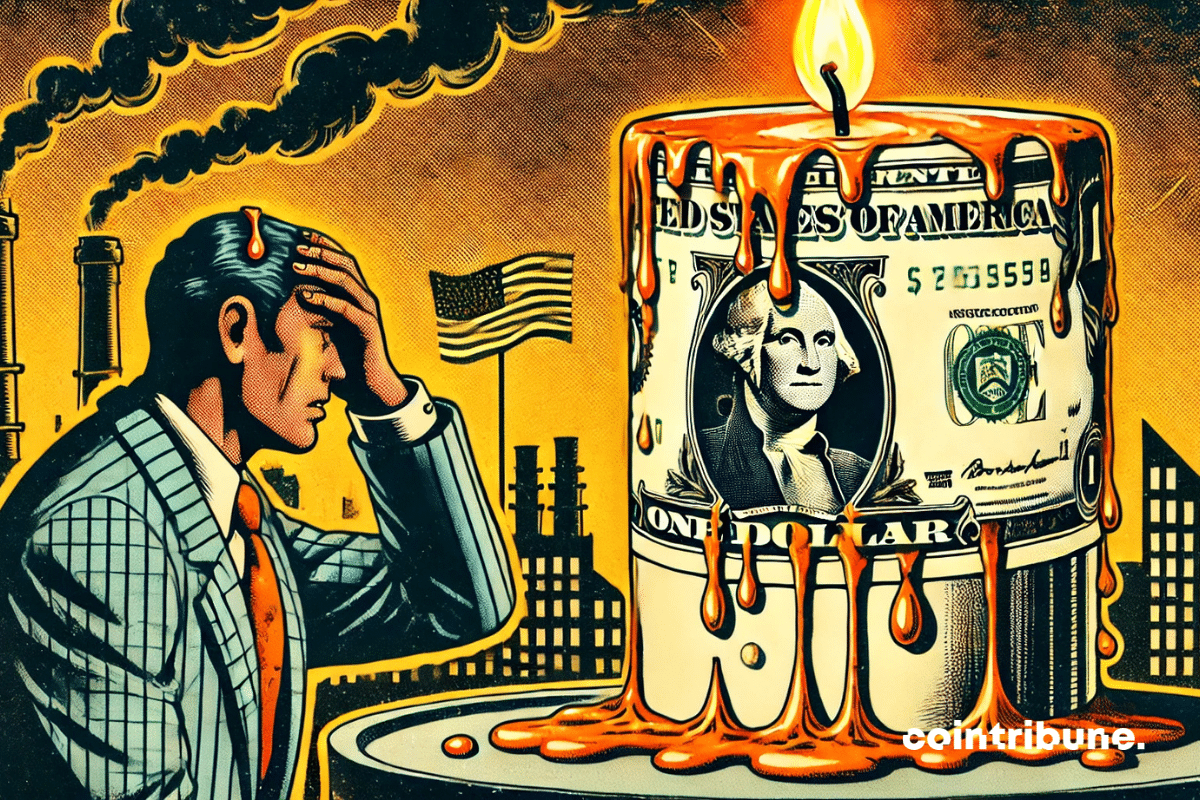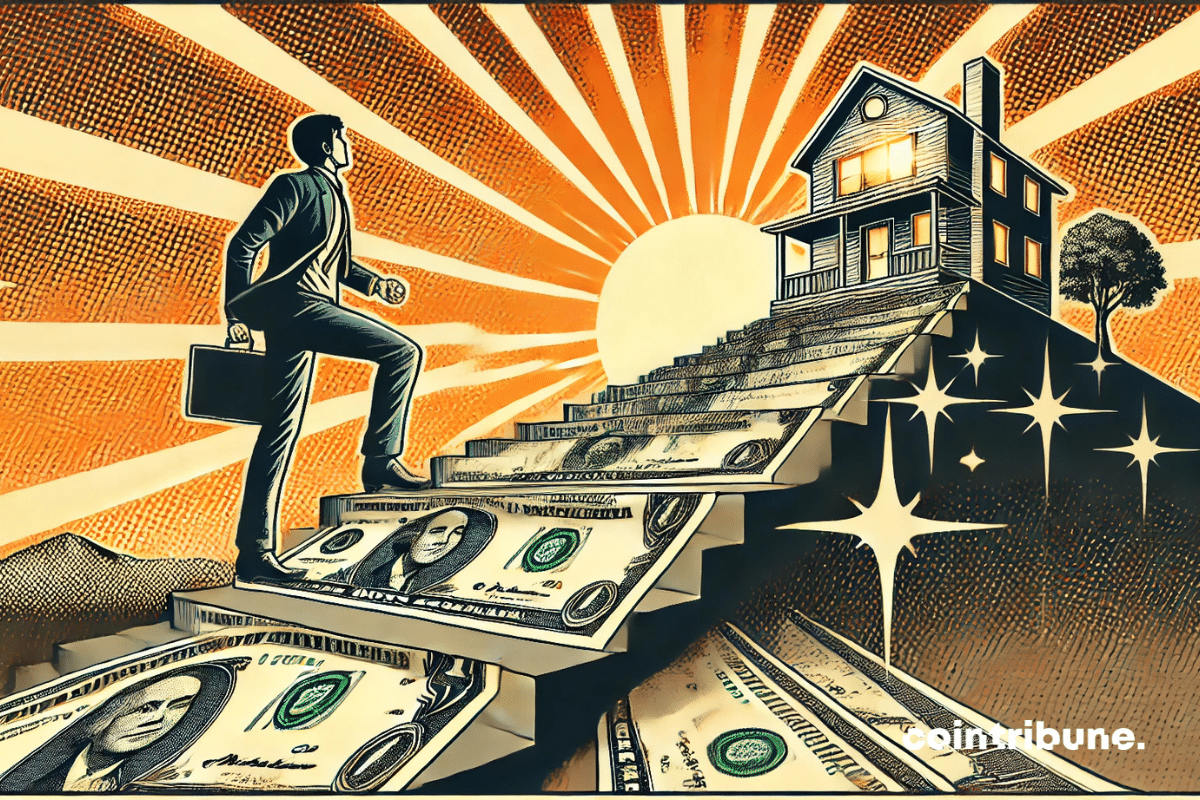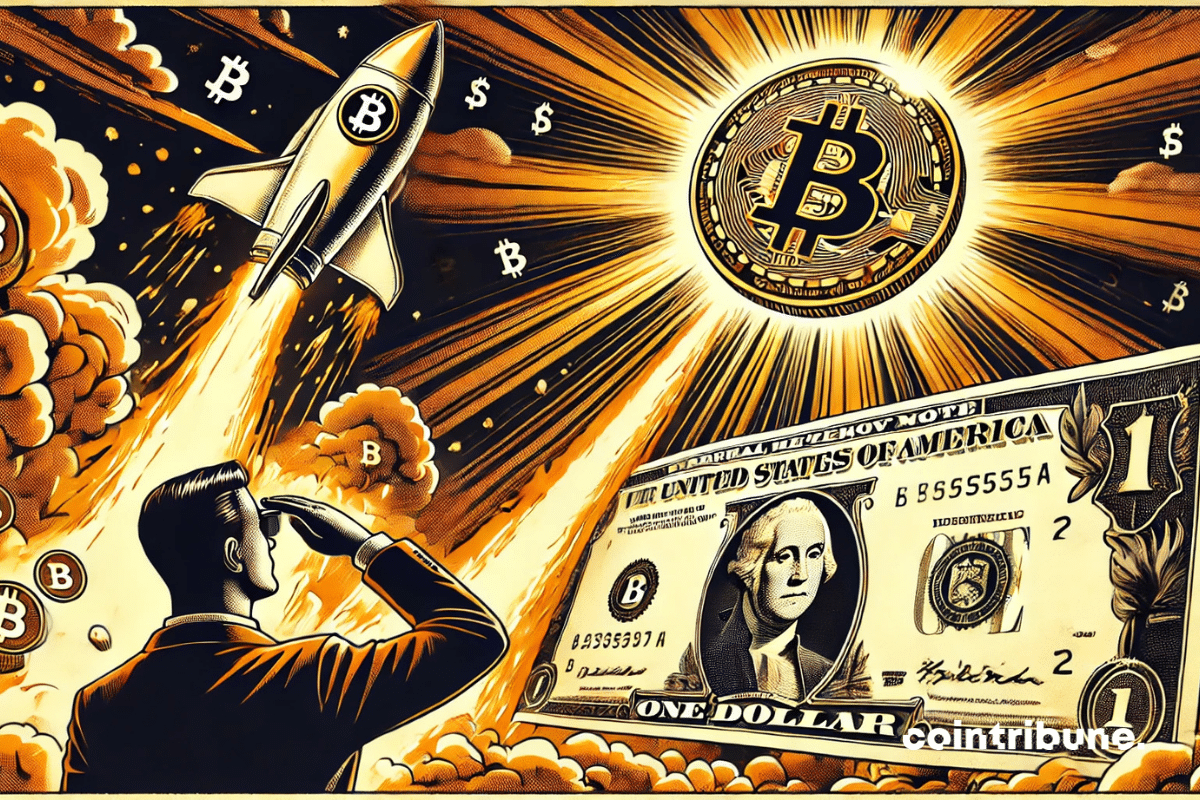The financial story of the United States may well be on the brink of a major turning point. As the national debt reaches new heights and economic tensions escalate, a key player in the crypto sector, Michael Saylor, proposes a bold strategy: to make bitcoin a national strategic asset. At a summit held at the White House, the founder of Strategy advocated for massive investment by the U.S. government in bitcoin, suggesting that the United States should acquire up to 25% of the total supply by 2035. This proposal, as ambitious as it is controversial, relies on a long-term vision in which bitcoin would become a pillar of American economic prosperity. In response to this announcement, the White House has already taken a first step by signing a decree that establishes a strategic reserve of bitcoin.
Home » Archives for Luc Jose Adjinacou » Page 10
Luc Jose A.
Diplômé de Sciences Po Toulouse et titulaire d'une certification consultant blockchain délivrée par Alyra, j'ai rejoint l'aventure Cointribune en 2019. Convaincu du potentiel de la blockchain pour transformer de nombreux secteurs de l'économie, j'ai pris l'engagement de sensibiliser et d'informer le grand public sur cet écosystème en constante évolution. Mon objectif est de permettre à chacun de mieux comprendre la blockchain et de saisir les opportunités qu'elle offre. Je m'efforce chaque jour de fournir une analyse objective de l'actualité, de décrypter les tendances du marché, de relayer les dernières innovations technologiques et de mettre en perspective les enjeux économiques et sociétaux de cette révolution en marche.
Innovation is a necessity in the blockchain universe, where competitiveness relies on speed, scalability, and user experience. It is in this context that BNB Chain is about to take a decisive step with the Pascal hard fork, a major technical update scheduled for March 20. Unveiled by Changpeng Zhao (CZ), this evolution promises to enhance compatibility with the Ethereum Virtual Machine (EVM) and strengthen the ecosystem's accessibility for developers and users.
The history of cryptocurrencies is marked by episodes where volatility defies the logic of markets. Solana (SOL), one of the most promising blockchain ecosystems, is currently experiencing an intense phase of fluctuations. While its price has seen a significant drop in recent days, its trading volume has witnessed a spectacular surge. Over 5.18 billion dollars have flowed through the platforms, a movement that is as intriguing as it is concerning. This resurgence of activity reveals a complex dynamic where financial losses and hopes for a rebound intertwine.
The American economy is going through a turbulent phase. Between rising inflation and a marked slowdown in growth, a long-forgotten specter resurfaces: stagflation. This phenomenon, which combines economic stagnation and rising prices, evokes the crises of the 1970s. Today, Donald Trump's new tariff policies rekindle fears of a return to that time when growth was stalled and purchasing power was eroding rapidly. The American president's decision to impose heavy taxes on Chinese, Mexican, and Canadian imports raises many questions about their real effects on the economy. As the Federal Reserve is pushed to its limits, markets are wavering, and businesses are concerned about the repercussions on their profitability.
Political decisions shape the future of cryptocurrencies, and the crypto summit organized by the Trump administration at the White House on March 7 is a glaring proof of this. This event, which aimed to establish a new posture for the United States towards the blockchain industry, sparked mixed reactions. While some observers see it as an institutional recognition of Bitcoin and a strategic turning point, others denounce it as a mere political stunt without concrete measures. This meeting, which coincided with the announcement of the creation of a strategic reserve of Bitcoin, had an immediate impact on the markets, leading to a 7.3% drop in BTC and massive outflows from Bitcoin ETFs. So, real progress or just a publicity stunt?
Access to mortgage credit is a key barometer of economic health and the purchasing power of households. After a drastic decline in lending volumes in 2023, the European Central Bank (ECB) has initiated a shift with its first rate cut. This decision, welcomed by the Governor of the Bank of France, François Villeroy de Galhau, is accompanied by a series of indicators that suggest a gradual recovery in the market. But is this upswing sustainable? And above all, will it be enough to permanently reverse the trend for borrowers and actors in the real estate sector?
The volatility of cryptocurrencies spares no one, and Solana (SOL) is no exception. After reaching a low of $125 on February 28, the native token of the Solana blockchain saw a rebound of 17%, hinting at a possible return towards $180. However, this recovery is far from guaranteed. Still down 50% from its all-time high of $295, SOL is facing several obstacles that could hinder its ascent. Between the slowdown in its on-chain activity, the lack of demand in the derivatives markets, and the concentration of transaction fees in the hands of a handful of users, the Solana ecosystem is wavering. What are the signals that could trigger a bullish rally?
The global economic scene is in full turmoil. In just a few months, trade tensions between China and the United States have reached a new level, severely impacting the foreign trade of the Asian giant. Official figures released by Chinese customs indicate a brutal slowdown, much more pronounced than expected, in exports and imports. In the background, a declining internal consumption and an uncertain economic climate amplify concerns. As Beijing sets an ambitious growth target, this halt raises many questions about the country's ability to maintain its dynamism in the face of repeated attacks from Washington.
The fragile balance of the conflict in Ukraine has just experienced a new twist. Donald Trump, the American president, discussed the possibility of imposing massive bank sanctions and high tariffs against Russia. This statement comes as Moscow intensifies its strikes on Ukrainian infrastructure, while Washington's position wavers between conditional support for Kiev and seeking a diplomatic solution. However, this posture of firmness is accompanied by contradictory decisions, raising questions about Trump's true intentions in foreign policy.
Bitcoin is evolving at the intersection of major geopolitical tensions and global monetary strategies. While financial markets expected the United States to take the lead on the issue of bitcoin reserves, it is ultimately China that could trigger an unprecedented economic earthquake. A series of discreet initiatives led by Beijing suggests a possible massive influx of liquidity into the crypto ecosystem, with a potential impact of $1.4 trillion. Behind this strategy lies a clear intent to stabilize the yuan in order to circumvent U.S. sanctions and monetary policy.
The crypto ecosystem is going through an expansion cycle where competition among blockchains is intensifying, especially in the decentralized exchanges (DEX) market. Indeed, long dominated by Ethereum, this sector is seeing the emergence of a significant competitor: Solana, whose trading volumes briefly surpassed those of Ethereum in February. This unexpected performance occurred despite an unprecedented crisis in the memecoin segment, these speculative cryptos that have long been a key economic driver of the network. Solana is holding on to its place among the DEX leaders, but the recent collapse of memecoins raises a major question: can the network maintain its position without this asset?
The Trump administration has just taken a new step in the regulation and integration of cryptocurrencies in the United States. President Donald Trump signed a presidential decree late last night that establishes a Strategic Bitcoin Reserve and a Digital Asset Stockpile, an initiative that transforms the American approach to cryptocurrencies.
The global economy operates in cycles where fiat currencies play a crucial role in market dynamics. Indeed, the weakening of the US dollar, often seen as an indicator of macroeconomic adjustment, seems this time to open a window of opportunity for cryptocurrencies. According to Raoul Pal, analyst and CEO of Real Vision, the fall of the dollar could be the catalyst for a particularly bullish second quarter in 2025 for bitcoin and the entire crypto market. This optimism is based on historical data and well-established macroeconomic trends. But then, is this situation the signal of a sustainable rally or merely a temporary market reaction?
The extreme volatility of Bitcoin is resurfacing, fueled by a cocktail of economic uncertainties and government initiatives in the United States. As the crypto market tries to stabilize after a high-tension start to the year, the price of BTC is experiencing violent fluctuations. Within a few days, it peaked at $93,000 before plunging sharply below the $82,000 mark. This dynamic reflects the nervousness of investors in light of two major announcements: the imposition of a 25% tariff by the United States on Canada and Mexico, and Washington's ambition to create a national crypto reserve.
Ripple, one of the major players in the crypto sector, is once again under the spotlight. While the firm is regularly criticized for its management of the XRP supply, its CTO, David Schwartz, made remarks that are sure to fuel the debate. According to him, Ripple has every right to act in its own interest through the sale of XRP tokens, a claim that raises eyebrows within the community. This statement comes as new elements strengthen the questions surrounding the distribution of XRP. A dormant wallet containing over $7 billion in XRP has been identified, and some massive transfers have been spotted in the markets. Between legitimate financial strategy and market manipulation, the question of the impact of Ripple's sales on the XRP price is more urgent than ever.














